How to Paint an Engine Without Removing It
Engine painting doesn’t have to be a difficult task. By using the right supplies and taking your time, you can have a clean and shiny engine in no time. In this blog post, we will show you how to paint an engine without removing it. This is a great way to give your engine a fresh new look without having to take it apart.
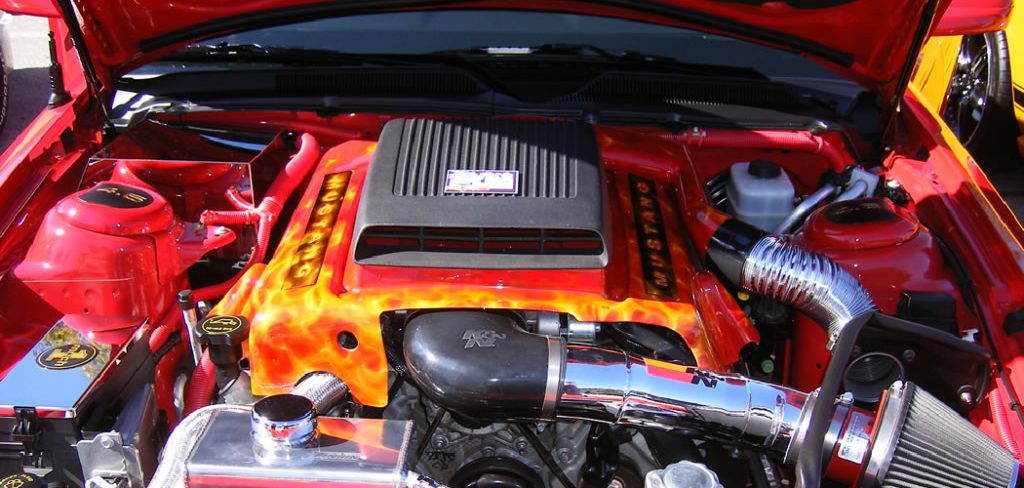
We will walk you through the process step-by-step to get started on your project today. So if you’re looking for a cost-effective way to spruce up your engine, keep reading for our tips on painting an engine with ease!
Three Methods on How to Paint an Engine Without Removing It
Method 1: Cleaning and Prepping Your Engine Bay
Step 1:
Let the engine cool. Before you start taking apart your engine, let it cool. If possible, let the car sit for a couple of hours or overnight before you begin work.
Step 2:
Prepare to remove parts. If you want to paint an entire engine bay, prepare to remove some components such as spark plugs and wires (even if they aren’t covered in paint). If you want to drive your car, leave them in.
Step 3:
Mask off parts with painter’s tape. To prevent overspray onto other parts of the engine bay, mask surrounding components with painter’s tape. It’s best to cover components in an organized way so it won’t look too busy after you remove the tape. For example, start by taping off spark plug wires and then moving on to other parts.
Step 4:
Cleaning your engine bay. Use a degreaser to remove debris and grime from the engine bay’s panels. If you don’t have or want to use a degreaser, you can use soap and water. If you’re painting your engine bay with rattle cans, be sure to rinse off any excess soap residue before starting your paint job.
Step 5:
Rinse and let everything dry. After you have cleaned off all of the dirt, grease, and other gunk from your engine bay, rinse it with water to remove all soap residue. Afterward, let everything dry completely before doing anything else.
Step 6:
Apply a primer coat. Use an aerosol primer specially designed for automotive surfaces. Once completed, let this dry for a few minutes. If you want a darker look, apply a second coat. Let the primer dry overnight to ensure it has been completely set before moving on.
Method 2: Prepare the Surface for Painting
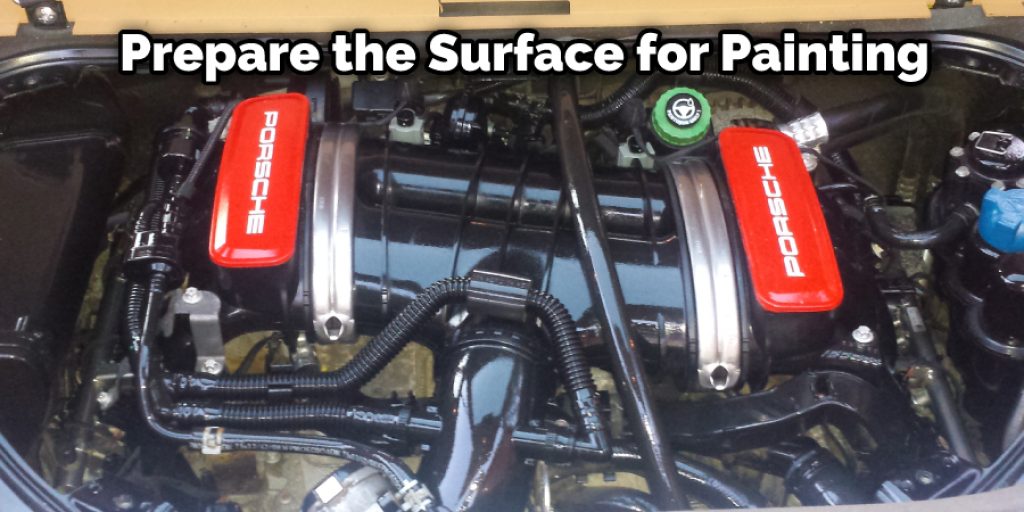
Step 1:
Scrub out rust using sandpaper. You’ll want to rid the surface of any rust that will compromise paint adhesion. If you have a lot of rust on your engine bay, consider using a wire brush instead.
Step 2:
Remove the old paint. Use a sanding block to remove the old paint. Start with coarse-grit sandpaper and work your way down to fine-grit paper for an even surface. If you only have light rust, fine-grit sandpaper should do the trick.
Step 3:
Sand the metal you want to paint. Before painting any part of your engine bay, you’ll want to sand all metal components with 220-grit sandpaper. This will create a rougher surface for the paint to adhere to.
Step 4:
Wipe off the dust. After sanding, wipe off the dust using a clean side of your sandpaper. Please don’t use an oil-based degreaser to wear down the paint and lessen its quality.
Step 5:
Apply primer. Apply an aerosol primer to any rust or bare metal in your engine bay. You’ll most likely need two coats. Wait for the primer to dry, and then apply a second coat to ensure full coverage and adhesion.
Step 6:
Confirm that everything is well covered. After the primer has dried, place a piece of scotch tape over any part you want to paint. Peel it away to reveal the base color. If it looks good, you can proceed with painting your engine bay.
Method 3: Painting Engine Compartment
Step 1:
Apply primer/undercoat to the engine bay. First, remove the tape from the engine bay. Then, apply a primer coat with a spray can to all metal surfaces you want to paint. Allow this to dry for a few minutes before moving on.
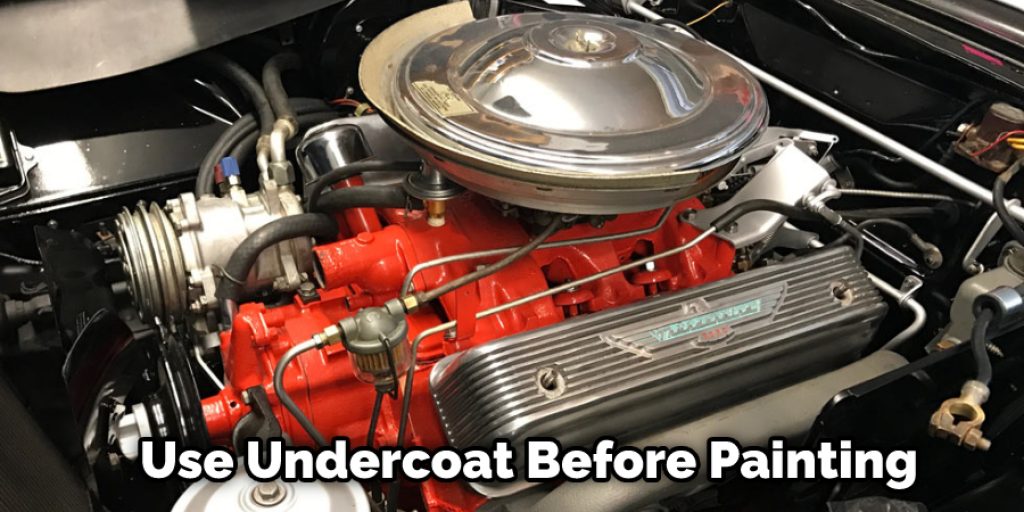
Step 2:
Tape off non-metal pieces of your engine bay. Suppose you aren’t going to paint your car’s hood, use painter’s tape to cover it. The same goes for any engine bay parts you don’t want paint on, such as your windshield washer fluid tank.
Step 3:
Paint the metal surfaces in your engine bay. Start with a bright green or a similar color that contrasts nicely with black primer. Spray one light coat over the painted metal surfaces. Let it dry for a few minutes before applying another coat. This ensures paint won’t drip onto other areas of your engine bay.
Step 4:
Painting engine bay with the brush. After the primer has dried, use a brush to paint metal surfaces. Start by dipping the bristles in black paint and applying several strokes in one direction. This will prevent lines from appearing on your newly painted engine bay.
Step 5:
Remove the painter’s tape, foil, and plastic sheets. Once the paint is dry, remove all of your painter’s tape. You can then carefully take away all foil and plastic sheets covering non-painted engine bay parts.
Step 6:
Let the paint dry. Before bringing your car outside again, let the color set for a day or two. This will prevent any chips from occurring as soon as you drive them back home.
Step 7:
Reinstall all the parts you removed. Once the paint is completely dry, replace all parts you removed while painting. Make sure to use a torque wrench to tighten bolts securely. That way, you can prevent any details from loosening.
Some Tips and Suggestions
1. Your engine doesn’t need to be in a car. You can take it out and do whatever you want with it, but please don’t hurt yourself or anybody else.
2. You don’t need any special tools for this Intractable, just some preventive measures such as gloves and eye protection.
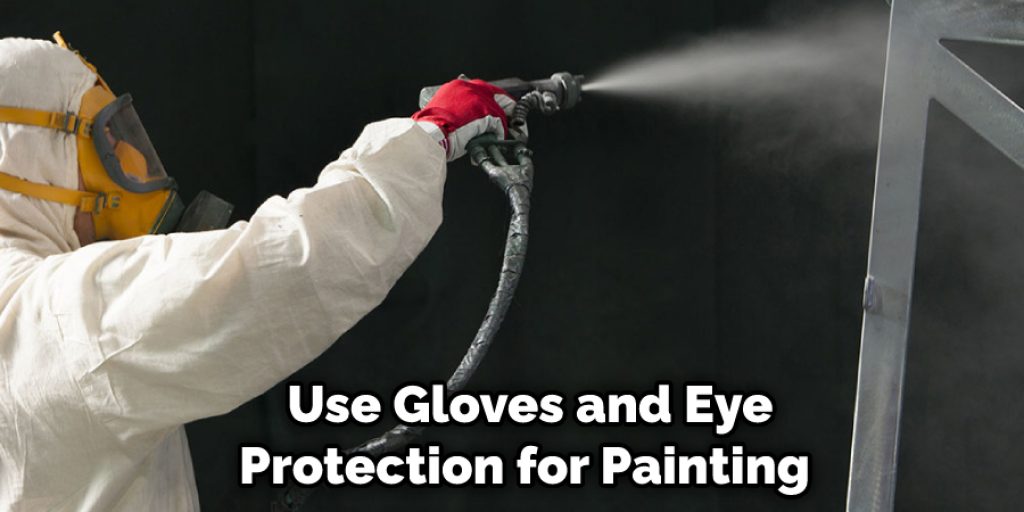
3. It is helpful to have a few extra hands at certain stages of the process, primarily for holding things. This will ultimately allow you to focus on achieving a clean finish rather than doing some acrobatics.
4. Apply the paint as best and as thoroughly as possible. You won’t even have coverage and a solid color, not blotches and streaks.
5. Practice scrap wood first if you’re worried about messing it up or want to test your skills first.
6. Even if an engine looks clean, there will probably still be some amount of oil and dirt left on it. Applying a good coat of paint will cover up some degree of grime.
7. The fumes from the paint aren’t deadly but you probably don’t want to breath them in or get them in your eyes either, so do this outside with some fresh air rolling past (but not too strong).
How to Paint an Engine Block?
An engine block is the central part of an engine. It usually consists of cylinders, coolant passages, and other components that move parts such as pistons and crankshafts. The process of painting an engine block is fundamentally the same as any metal surface (some differences). If you want to learn how to paint an engine without removing it, follow the instructions mentioned in this blog.
First, you should prepare all the materials and tools needed for painting an engine, such as masking tape, sandpaper, degreaser solution, and primer paint. Next, remove any mud or grease from the engine block with a degreaser solution using a stiff brush. If there is stubborn grease or grime that you cannot remove with a brush, you can use sandpaper as an alternative. Never use steel wool as it will scratch the surface of the metal and cause more problems.
What Are the Benefits of Painting an Engine Without Removing It?
There are many benefits to painting an engine without removing it. The primary reason to paint an engine without removing it is cost savings. If you’re paying someone else to do the painting, what they charge per hour and how long it will take to remove and replace parts can vary significantly across different shops.
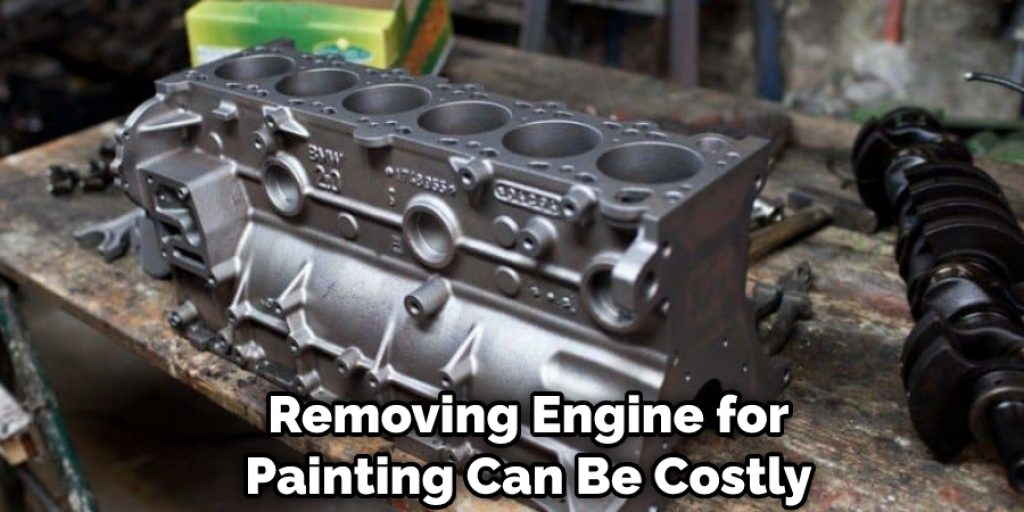
You save money by having your mechanic leave the parts in place and spraying them where they sit. Also, if you want to have a professional paint your engine, often, they will have to disassemble the machine anyway. If this is the case, they will need to paint each piece as they take it apart, which can be incredibly time-consuming.
Conclusion
If you need to paint an engine but don’t want to remove it, there are many options. The first is using the rotary spray gun method, which can be done by attaching your air compressor hose and nozzle directly to the engine’s valve cover. With this technique, you have minimal overspray on other vehicle parts because all painting is done below waist level.
This process does require some practice, so make sure that you test out how well your setup works before starting with a full coat of paint-you may even want to do touchups after each layer if necessary. If you’re looking for more information on how to paint an engine without removing it, this blog post is an excellent place to start.
We hope that the tips we’ve provided will be helpful and informative for your next project. If not, feel free to reach out our team of experts are always happy to help!




